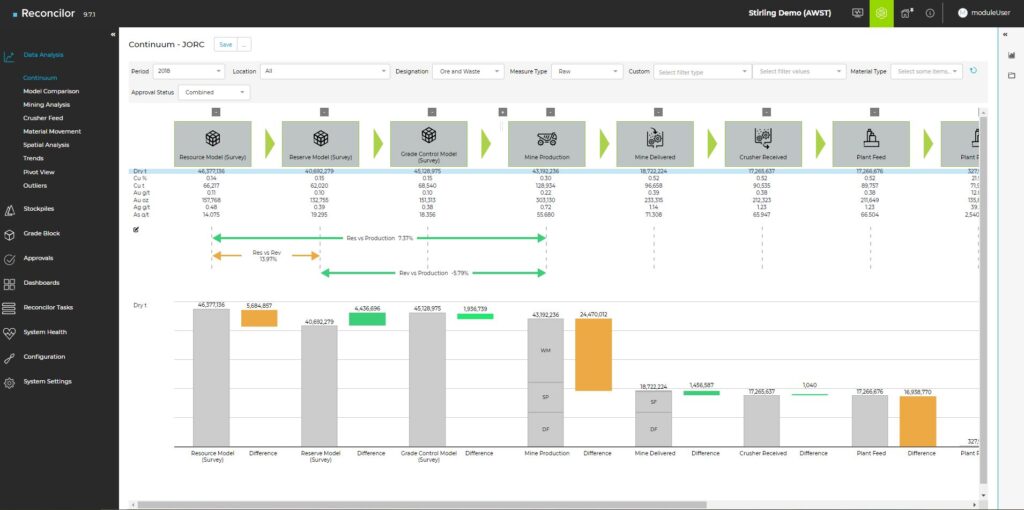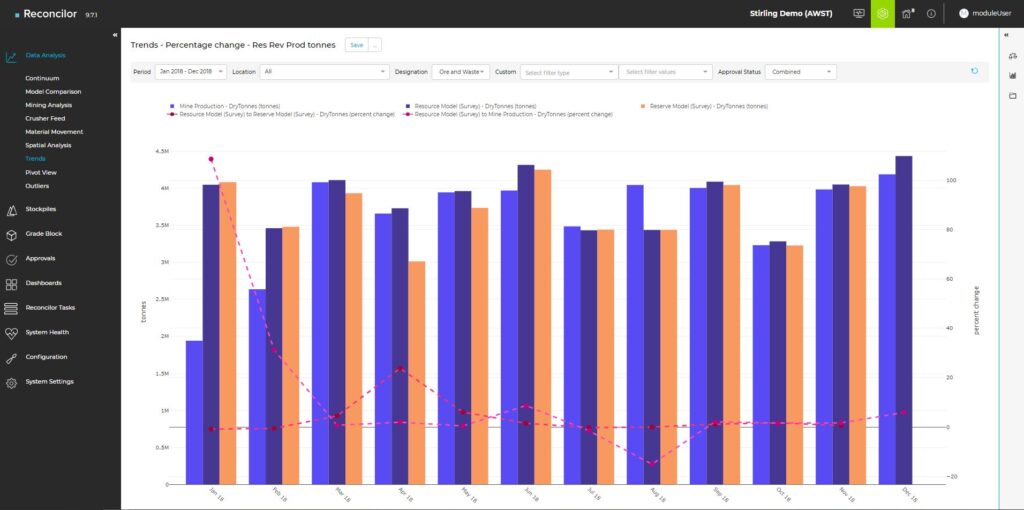
- news
Practical Implementation of Draft JORC Code Changes for Reconciliation: Keeping Compliance Front and Centre
Draft JORC Code Changes for Reconciliation: A Summary of Key Updates and Their Impact by Rayleen Hargreaves, Principal Consultant and Reconcilor Product Owner at Snowden Optiro.
With the proposed changes to the JORC Code, particularly in the area of reconciliation, companies are facing new demands for transparency and accuracy. These updates aren’t just minor tweaks—they’re a significant shift towards more standardised and accountable reporting practices.
Reconciliation, the process of comparing resource and reserve estimates with actual production, is critical for assessing a project’s true performance. However, many companies have faced challenges in providing clear and consistent reconciliation data, leading to transparency gaps that can undermine investor confidence. The forthcoming draft JORC Code changes aim to close these gaps, highlighting the importance of improved reconciliation practices that align with ASX Listing Rules and industry standards.
Draft JORC Code Changes: Key Updates and Their Impact on Reconciliation
One of the most prominent updates is the introduction of Section 10 in the JORC Code Exposure (Draft), which focuses specifically on reconciliation. Companies will now be required to:
- Discuss any material changes to assumptions underlying Mineral Resources and Ore Reserves in their annual statements (Clause 2.37).
- Include a Mineral Resources Technical Summary for material mining projects when reporting new or significantly changed estimates (Clause 8.28).
- Provide relevant sections of Table 1 for Ore Reserve estimates when there are significant changes (Clause 9.28).
These requirements are designed to make reports more transparent and easier to understand, ensuring that stakeholders have a clear view of what’s driving a project’s performance.
Draft JORC Code Changes: The Role of Reconciliation and Standardisation
Accurate reconciliation is more than just a compliance exercise—it’s a vital tool for assessing the reliability of resource and reserve estimates. By ensuring that reconciliation practices are standardised and transparent, the draft JORC Code changes allow companies to present more reliable data, boosting confidence among investors and other stakeholders.
Standardisation also facilitates industry-wide comparisons, making it easier to benchmark performance and evaluate the value of different mining projects. Adopting best practices in reconciliation and reporting not only enhances transparency but also boosts the credibility of a company’s operations.
In 2019, Dr. Geoff Booth and I published a paper titled Transparency and Standardisation in Metal Reconciliation Reporting, where we addressed the widespread issue of metal loss due to poor reconciliation processes. Metal reconciliation—comparing estimates of resources and reserves with actual production—remains a complex and often opaque process. Despite the importance of this comparison, many companies fail to provide transparent reconciliation data in their public reports. This lack of transparency prevents investors and stakeholders from fully understanding a project’s performance and limits the ability to benchmark operations across the sector.
If you are interested in reading this paper, get in touch with Rayleen here.
Using Reconcilor to Meet Compliance Standards
With the draft JORC Code changes placing a heightened focus on reconciliation, companies must not only adapt but actively seek out tools that simplify compliance. Datamine’s Reconcilor has been a trusted solution for over 20 years, and it’s already in compliance with the draft JORC reconciliation requirements. Reconcilor simplifies the process by producing detailed reconciliation reports that meet both internal and external standards, ensuring accurate comparisons between estimates and actual outcomes. This helps companies identify discrepancies, improve reporting accuracy, and streamline compliance with the new JORC Code.


Conclusion
The proposed changes to the JORC Code represent a major step forward in promoting transparency and standardisation in the mining industry. As these changes take effect, it’s crucial for companies to review and enhance their reconciliation processes. Tools like Reconcilor can play a key role in helping companies stay compliant while improving the accuracy and credibility of their reports. By embracing these changes, mining companies can build stronger trust with investors and position themselves for long-term success.
If you want to know more about how your company can stay compliant with the latest JORC Code changes and streamline reconciliation processes, feel free to reach out to Rayleen Hargreaves here.
Related Posts
We provide a lot of great technical content for free!
Subscribe here for our podcasts, technical articles and news


